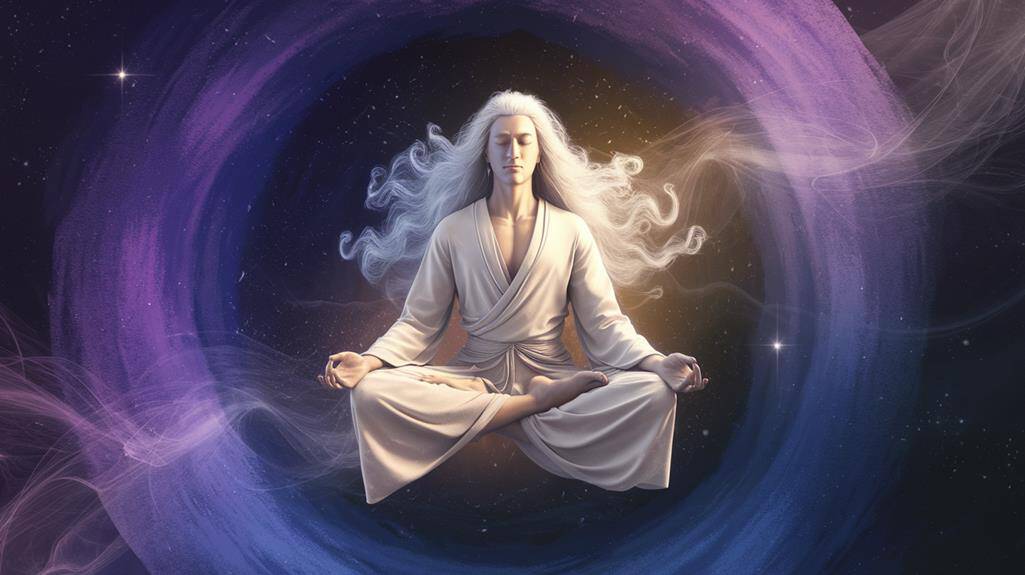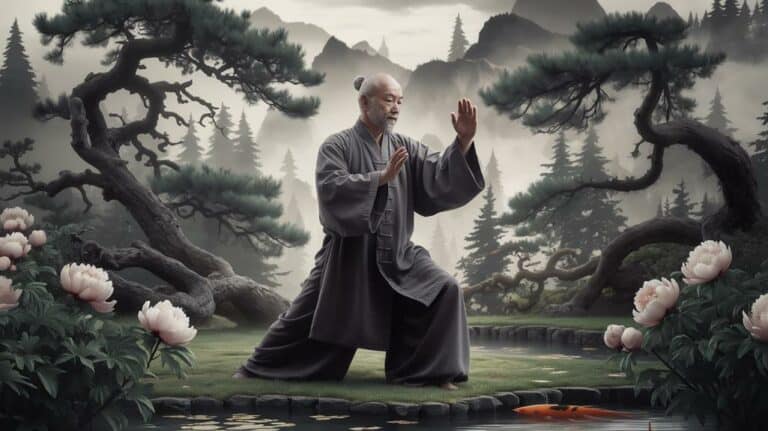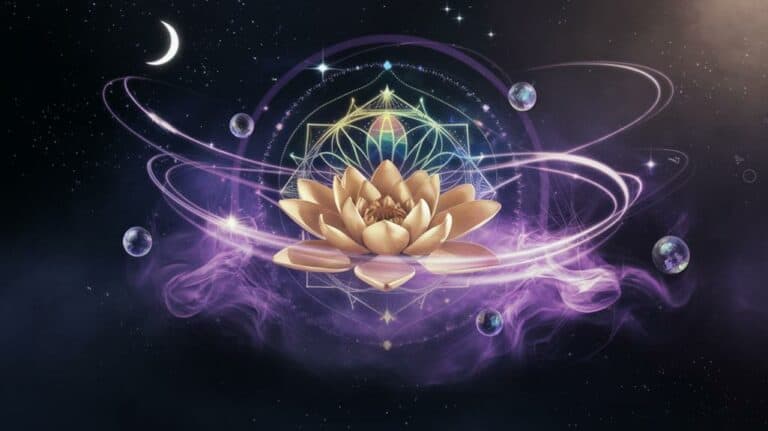Mysticism and the Practice of Yoga Nidra
You’ve likely encountered moments of profound stillness where time seems to dissolve, yet you remain fully aware. These rare glimpses into expanded consciousness mirror what practitioners of Yoga Nidra experience regularly through their systematic approach to “yogic sleep.” As you explore this ancient practice, you’ll discover it’s far more than just relaxation—it’s a gateway to mystical states that bridge the gap between your ordinary reality and transcendent awareness. Whether you’re seeking spiritual insight or psychological healing, this transformative practice offers a map to territories of consciousness that most people never know exist.
The Ancient Origins of Yogic Sleep
Originating in ancient India thousands of years ago, Yoga Nidra emerged from traditional Tantric practices as a powerful method of achieving deep relaxation. As you explore its roots, you’ll discover that ancient yogis developed this practice as a way to access the liminal space between wakefulness and sleep, where consciousness expands beyond ordinary boundaries.
Through their dedicated exploration of altered states, these mystics revealed the transformative potential of conscious rest. In the sacred texts of the Upanishads, you’ll find references to this profound state of awareness, where you’re invited to witness the dissolution of physical form into pure consciousness.
The practice has been passed down through generations of spiritual seekers, each adding their understanding to its rich tapestry of wisdom. Ancient practitioners recognized that you could access deeper layers of being through this systematic approach to relaxation, moving beyond the constraints of your physical form to touch the eternal.
You’re connecting to a lineage that stretches back through time, embracing the same timeless principles that have guided seekers toward self-realization for millennia.
States of Consciousness During Practice
During Yoga Nidra practice, you’ll move through four distinct states of consciousness: waking, dreaming, deep sleep, and transcendental awareness.
As you begin, you’re in the waking state, fully conscious of your surroundings yet gradually releasing your attachment to external stimuli. Your mind remains alert while your body surrenders to profound relaxation.
As you drift deeper, you’ll enter the dream state, where your consciousness hovers between sleep and wakefulness. Here, you’ll witness hypnagogic imagery and spontaneous thoughts without becoming entangled in them. Your awareness becomes more subtle, like watching clouds pass through an endless sky.
In the deep sleep state, you’ll experience a profound quietude where thought processes temporarily dissolve. Yet unlike regular sleep, you maintain a thread of awareness – a witness consciousness that observes the void.
Mystical Encounters Beyond the Mind
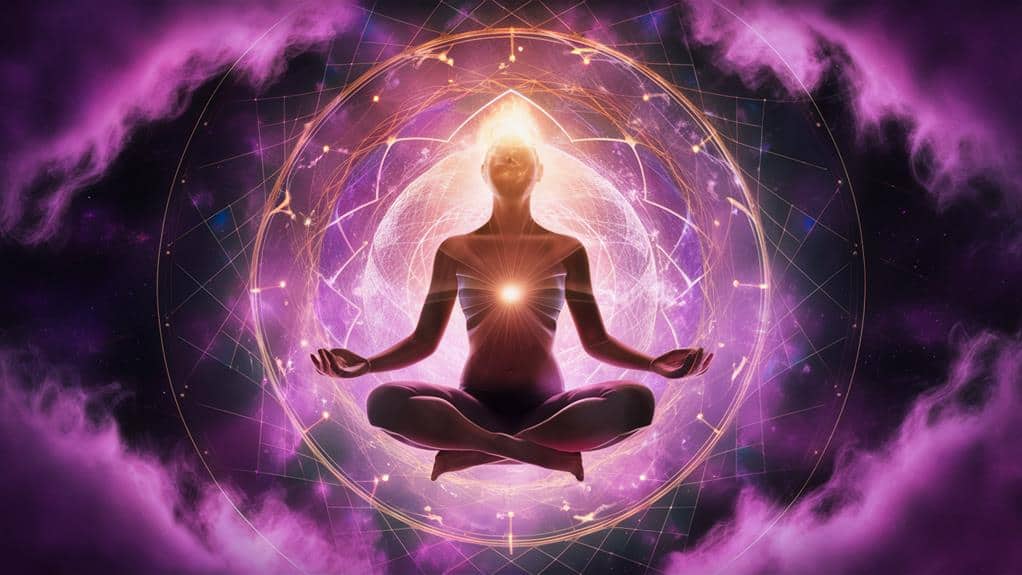
Many practitioners report extraordinary mystical experiences during advanced Yoga Nidra sessions. As you venture deeper into the practice, you’ll discover domains beyond ordinary consciousness where time seems to dissolve and space becomes fluid.
You might encounter luminous beings, traverse ethereal landscapes, or witness the intricate tapestry of universal consciousness unfolding before your inner eye.
During these profound states, you’ll often find yourself transcending the limitations of physical form, experiencing what mystics describe as “cosmic consciousness” – a state where you’re simultaneously everywhere and nowhere.
You’ll notice how your awareness expands beyond the confines of your personal identity, merging with what feels like infinite intelligence. These aren’t mere hallucinations but glimpses into deeper dimensions of reality that your everyday mind typically can’t access.
You may experience spontaneous insights into life’s greatest mysteries, receive symbolic messages through vivid imagery, or feel an overwhelming sense of unity with all existence.
These encounters often leave you with an unshakeable knowing that reality is far more vast and interconnected than your rational mind can comprehend.
Jung’s Perspective on Yoga Nidra
Carl Jung, with his deep interest in the unconscious mind, recognized Yoga Nidra as a powerful gateway into what he called the collective unconscious. In his exploration of Eastern practices, you’ll find that Jung saw this form of yogic sleep as a means to access archetypal symbols and patterns that lie dormant within your psyche. He believed you’re not just accessing personal memories but tapping into humanity’s shared psychological heritage.
When you practice Yoga Nidra, you’re engaging with what Jung would describe as the process of individuation – the journey toward psychological wholeness. You’ll notice how the practice’s systematic relaxation aligns with Jung’s concept of active imagination, where you’re neither fully awake nor completely asleep, but rather in a state where the boundaries between conscious and unconscious dissolve.
This liminal space, Jung suggested, is where you’ll encounter profound symbolic material that can transform your understanding of yourself. Through Jung’s lens, you’re not merely relaxing during Yoga Nidra; you’re participating in an ancient method of psychological integration that bridges Eastern wisdom with Western depth psychology.
You’re accessing universal patterns that connect you to humanity’s collective spiritual heritage.
Between Waking and Dreaming
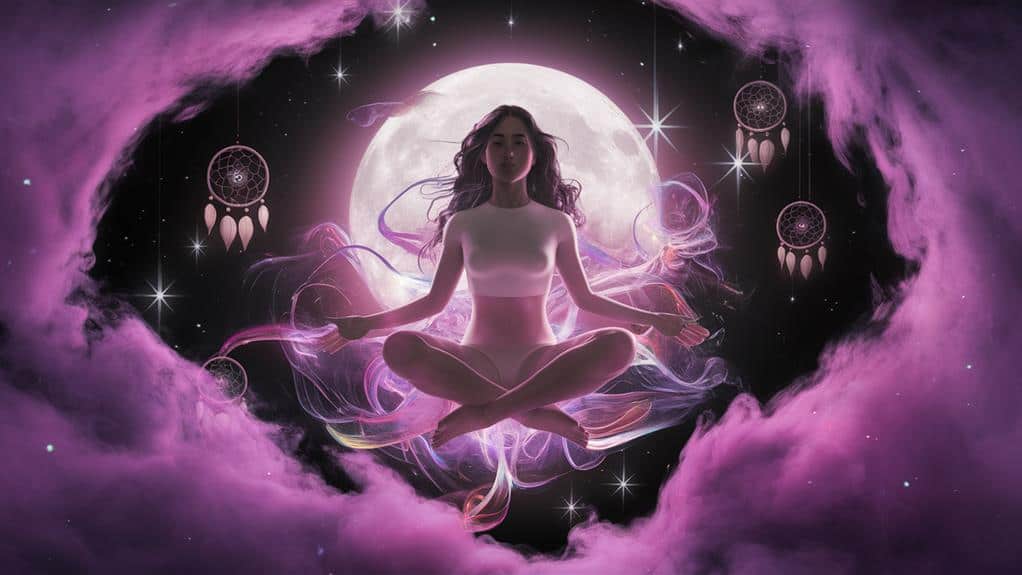
While Jung explored the psychological depths of Yoga Nidra, the practice itself operates in a unique neurological space that lies between ordinary wakefulness and sleep.
In this liminal domain, you’ll find yourself suspended in a state of heightened awareness where the boundaries between consciousness and unconsciousness begin to dissolve.
As you enter this threshold state, you’re neither fully awake nor completely asleep. Your brainwaves shift from beta to alpha and theta patterns, creating a fertile ground where deep transformation becomes possible.
It’s in this space that you’ll discover the watchful witness within – the part of you that observes without judgment or attachment.
The practice invites you to explore this in-between territory where time seems to flow differently.
You’ll notice how your ordinary sense of self begins to expand, allowing you to access deeper layers of consciousness that usually remain hidden during waking hours.
This twilight zone of awareness serves as a gateway to profound inner experiences, where you can release long-held patterns and access states of consciousness typically available only in deep meditation or dreams.
Transformative Power of Body Scanning
Body scanning forms the cornerstone of Yoga Nidra’s transformative journey, guiding you through a systematic exploration of physical sensations that awakens deep body awareness.
As you move your attention methodically from your toes to the crown of your head, you’ll discover layers of tension you didn’t know existed, allowing them to dissolve into spaces of profound relaxation.
Through this precise practice, you’re training your consciousness to penetrate deeper than ordinary awareness permits.
You’ll notice how your right shoulder carries different sensations than your left, how your breath creates subtle movements in your ribcage, and how energy flows through pathways you’ve never consciously perceived.
This heightened sensitivity becomes a gateway to transformation, as you’re no longer merely observing your body but actively participating in its subtle reorganization.
The power of body scanning lies in its ability to bridge the gap between your physical form and consciousness.
As you master this technique, you’ll develop an intimate relationship with your body’s wisdom, accessing states of awareness that transcend ordinary perception and open doorways to expanded consciousness and deep healing.
Eastern Wisdom Meets Western Psychology
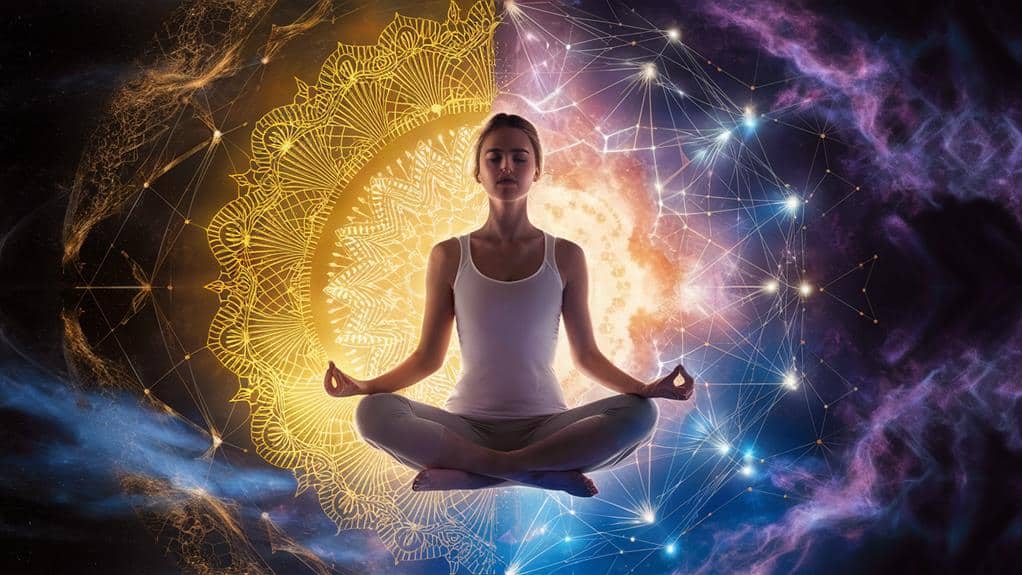
Through its evolution in modern times, Yoga Nidra exemplifies the harmonious fusion between ancient Eastern meditation practices and contemporary Western psychological principles.
You’ll find that modern practitioners have skillfully woven together traditional yogic concepts of consciousness with Western understanding of the subconscious mind, creating a powerful bridge between two worlds of healing wisdom.
As you explore this integrative approach, you’ll discover how Western psychology’s emphasis on healing trauma aligns seamlessly with Yoga Nidra’s systematic method of releasing deep-seated tensions.
The practice incorporates elements of Jungian psychology’s shadow work while honoring the Eastern concept of witnessing consciousness.
You’re engaging with a practice that’s been validated by contemporary neuroscience, which confirms what ancient yogis knew intuitively about the brain’s capacity for neuroplasticity and deep relaxation.
This synthesis hasn’t diluted either tradition but has instead created something more accessible and scientifically grounded.
You’re participating in a practice that draws from both the rigorous methodology of Western psychological research and the profound spiritual insights of Eastern contemplative traditions, offering you an all-encompassing path to self-discovery and transformation.
Modern Applications of Sacred Practice
Numerous contemporary settings have embraced Yoga Nidra as a practical tool for addressing modern-day challenges. You’ll find this ancient practice integrated into wellness centers, corporate environments, and healthcare facilities, where it’s helping people navigate stress, anxiety, and the relentless pace of modern life.
As you explore these adaptations, you’ll discover how the sacred essence of Yoga Nidra remains preserved while meeting today’s pressing needs.
In therapeutic contexts, you’re witnessing the practice’s profound impact on trauma recovery, sleep disorders, and chronic pain management. Healthcare practitioners have begun incorporating this powerful technique into treatment protocols, recognizing its ability to activate your body’s natural healing responses.
Within the corporate sphere, you’ll see how dedicated practitioners are using Yoga Nidra to enhance creativity, boost productivity, and foster emotional resilience among workforce teams.
The practice’s accessibility means you don’t need special equipment or physical capabilities to participate. Whether you’re seeking relief from digital overwhelm or deeper spiritual connection, you’ll find that Yoga Nidra’s modern applications honor its mystical roots while offering practical solutions for contemporary challenges.



